How to choose a good pump for watering the garden with water from a pond, barrel or pond
Stable watering is the key to obtaining a plentiful harvest from garden beds. If on rainy days the weather takes care of the plants, then in the hot months it is up to the gardeners to decide, using buckets and watering cans for this. The use of pumping equipment helps to facilitate the work.
The market offers various pumps for watering the garden and it is difficult to get a suitable model, right? We will help you navigate the range of equipment, talk about the features of different modifications and provide a step-by-step selection algorithm based on an analysis of the characteristics of the units.
In addition, we will designate trademarks and brands whose products are in demand and trust among summer residents.
The content of the article:
Source selection for water intake
The selection and purchase of a suitable model of garden pump for irrigation largely depends on what water is supposed to be pumped and where it is planned to take from.
Plants cannot develop normally without enough life-giving moisture. But only well-settled warm water is suitable for watering green spaces.
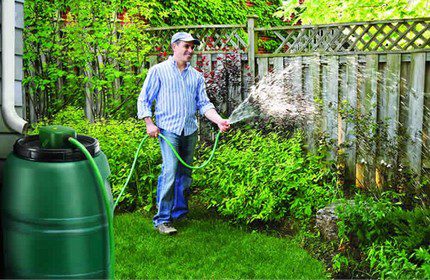
Zealous owners collect rainwater in barrels and large tanks located on the site under the drains. If necessary, it remains only to get it, scooping it with a bucket or pumping it out from the barrel with a pump for irrigation.
Quite often, if the site is present well or well, then water for irrigation is taken from them.But the “cold shower” can cause irreparable damage to the delicate roots of plants: they can begin to rot.
For this reason, the water pumped out of the hydraulic structure is first poured into a tank, allowing it to warm up under sunlight, and only after that it is used for irrigation.
The third, and perhaps the most successful version of the source, from where it is convenient to take water for irrigation - a nearby natural reservoir or an artificial pond constructed on its own.
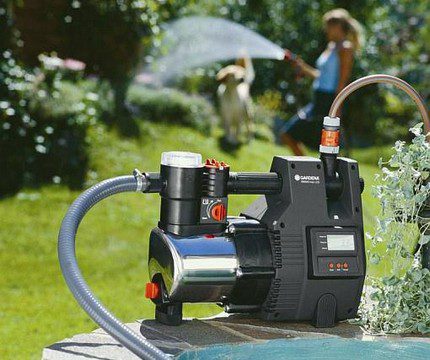
In all of the above sources, water is very different in terms of degree of contamination. Therefore, for each of them separate types of pumping equipment have been developed.
Types of pumps for pumping water
For irrigation of garden crops, two types of pumps are used. Depending on the method of water intake and placement of the unit body relative to the source, they are surface and submersible.
Option # 1 - barrel for pumping tanks
Such devices are designed specifically for pumping water from small tanks, the depth of which does not exceed 1.2 m.
Among the pumping equipment on the market, such units are considered the easiest to use and maintain.
The main advantage of pumps for the production of irrigation from the barrel is compactness and mobility. The weight of the unit averages 3-4 kg.
Taking it by the handle, it is convenient to carry it around the site and install it one by one on containers placed under the catchments. In addition, barrel pumps are known for low noise.
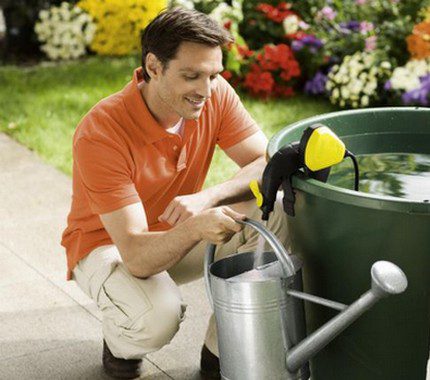
The use of barrel aggregates is also convenient because the water used for irrigation can be pre-diluted with fertilizers to feed cultivated plants.
Most models are equipped with a pressure regulator. With its help it is convenient to set the pressure necessary for work. Filters for holding large particles are built into the pumps for tanks.
But as noted by owners who have already tested household models of this type, built-in filters do not always cope with the task. As a result, even expensive systems quickly become clogged and fail.
The easiest way to solve this problem is by arranging an additional home-made filter in the form of a cut from a gauze or mesh tulle folded in 2-3 layers.
The pump is simply placed on a canvas suspended in the form of a hammock so that the mesh layer between the suction device and the water does not allow debris to leak out.
Rust and sludge can be prevented from entering the system by placing the pump inside the tank so that it does not reach the bottom of the tank by 5 cm.
Option # 2 - surface for shallow ponds
When planning to use an artificial pond or well as the main source of water intake, it is worth considering models surface pumps.
They are placed in the immediate vicinity of the source, and water is taken by immersion in the construction of the suction hose.
Outdoor devices are able to pump water from a depth of 8 m and issue a stream to a level of about 30-50 m. Thanks to this pressure, from one point you can water several rows of beds at once.

A metal pipe is used as the outlet pipe for most surface models. The rubber hose is not suitable for this purpose because rarefied air is created inside it at the time of pumping the liquid.
As a result: the elastic walls begin to shrink, preventing the water flow from moving normally towards the exit.
The only drawback of pumps for irrigation from shallow reservoirs is the vibration and the formation of noise during operation.
You can get rid of the loud “growl” by placing the unit in the outbuilding, or by placing the unit body on a rubberized rug or stand.
Option # 3 - Submersible for Contaminated Ponds
Submersible pumps are rarely used for gardening purposes. The working part of this type of device is immersed directly in the source, buried below the water level. The pumped liquid under pressure is discharged to the surface through rubber pipes.

Depending on the type of model, submersible pumps are able to pump water from a depth of 80 m. This parameter is relevant when used as a source of water for irrigation of a drilled well.
According to the method of water supply submersible pumps for irrigation are presented in two versions:
- Vibrating. They work due to the movement located inside the membrane. It causes pressure drops, under the influence of which water is first sucked in and then pushed out. Vibration devices are low in price, but are afraid of clogging with silt.
- Centrifugal. Raise water to the surface by rotating the blades and wheels. They "grind" water with such force that minor pollution is not afraid of them. But such units are an order of magnitude higher than vibrational ones.
The outer shell of submersible pumps can be made of stainless metal or plastic.Each of these materials is designed for constant contact with a constant contact with the working medium.
If necessary, use a pond as a source of water intake, the water in which does not differ in high purity, the preference should be attributed drainage models.
Such aggregates are ways to “process” lightly and heavily contaminated water, which contains various kinds of impurities with a diameter of 5-10 mm.
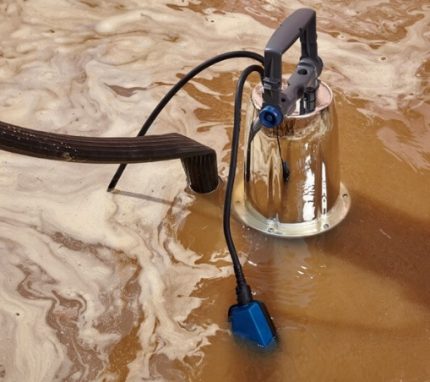
The chopper located just above the suction device will crush the leaves, sludge and other debris that have fallen into the device with the smallest particles during pumping.
Thanks to this, irrigation water will be additionally enriched with organic fertilizers, which will only positively affect the yield of cultivated crops.
A significant drawback of the drainage units used as pumps for irrigation from the pond is the low pressure in the system. So you can water the garden with their help only by gravity.
If you plan to use a nozzle or a divider, then the water may not go at all. You can get out of this situation by completing the work in stages.
First, with the help of a drainer, liquid is pumped into the storage tank. And then, after it has settled and heavy sediments have settled, the garden is watered using a surface and submersible garden pump.
Option # 4 - automatic for drip irrigation
Especially popular are automatic pumps equipped with timers. They greatly facilitate the task for owners who do not have the opportunity to spend precious time and excess moisture on watering for hours.
Drip irrigation pumps are equipped with a pressure switch and accumulators. Management in such systems can be either manual or automatic.
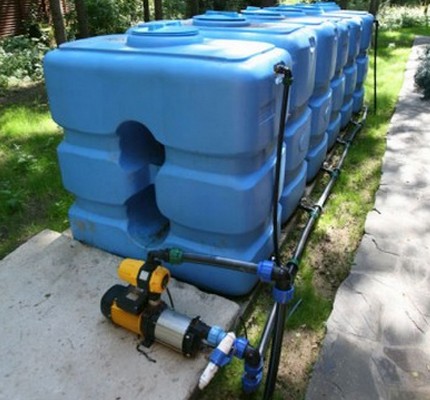
Although such equipment is not cheap, but over time, the cost completely pays for itself, allowing more rational use of hundreds of cubic meters of moisture supplied during the season. Yes, and the owner freed up a lot of time that would have previously been spent on watering.
Aggregate selection criteria
When choosing pumping equipment, it is necessary to determine for yourself the following factors:
- Distance from the source of water intake to garden beds.
- Height difference from the installation site of pumping equipment to the extreme point of the garden.
- Plot sizereserved for crops that need frequent watering.
- Type of watering (radical, drip, sprinkling).
- Frequency of use pumping equipment.
For drip irrigation, it is enough to install low-power equipment. When planning to irrigate crops through sprinkling, you should give preference to systems that can easily withstand great pressure.

The most reliable are units with two-stage mechanisms. Such powerful aggregates are chosen by the owners of large areas, in which a large area is allocated for garden beds, a flower garden and a garden in need of watering.
No. 1 - calculation of device performance
To calculate the required performance of the purchased pumping equipment, averaged indicators are usually taken.
Depending on climatic conditions and soil conditions according to the current SNiPu for irrigation of beds with an area of 1 square. m is required from 3 to 6 liters per day.
Therefore, for a garden area of 200 square meters. m daily rate will be: 200x6 = 1200 liters.
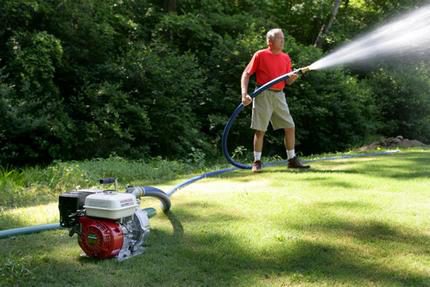
The maximum capacity of barrel units is 4000 l / h. Choosing among low-power devices designed for pumping liquid from storage tanks, it is worth taking a look at models with a capacity of 2000 l / h.
The price of such devices starts from 2.5 thousand rubles.
When arranging drip irrigation, the most reliable type of pump is centrifugal. After all, only he is capable of pumping large portions of water under high pressure without damage to the motor overheating for a whole day.
When choosing among drainage models, keep in mind that such units have a capacity of 83 to 250 l / min with a water supply of 5 m to 12 m.
When using water for irrigation from especially polluted water bodies, the diameter of the impurities of which is 15-55 mm, it is worth choosing units with a capacity of 37 to 450 l / min. They are able to provide a feed to a height of 5-22 m.
No. 2 - recommended pressure of a stream
Pump pressure refers to the mechanical operation of the unit, as a result of which the pressure of the liquid rises and it is pumped. In this case, part of the drive energy is converted into the kinetic energy of the liquid during pumping.
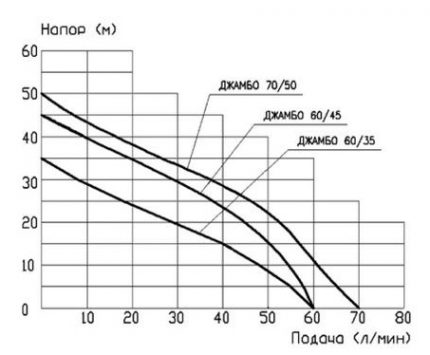
The higher the value of the generated head, the greater the distance can be maintained between the pump and the source of water intake. When calculating the power, also take into account that the ratio of vertical and horizontal lengths is 1: 4.
At the same time, when it comes to watering, then too much pressure is more likely to be troubles than good. After all, the exile pressure can not only damage the dividers, tearing them off the hose, but also harm the green spaces.
No. 3 - the presence of an automation system
Automation significantly increases the cost of pumping equipment. But it plays a significant role, preventing overheating of the "heart" of the unit - the motor.
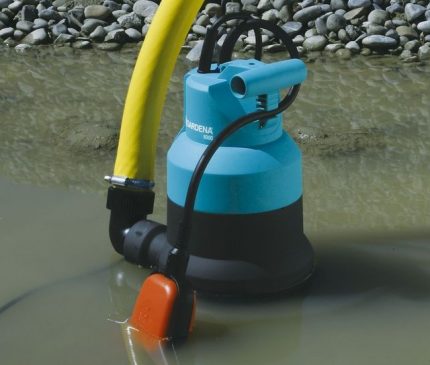
A float switch protects the appliance's motor when the set minimum water level is reached. This prevents the unit from “dry running”, thereby minimizing the risk of breakdowns.
Choosing a unit equipped with float switch, during operation, you will not need to control how empty the barrel is.
You are only required to flush the float switch once a season under water pressure to prevent the box body from sticking to the outlet pipe.
No. 4 - location of the suction valve
The suction valve can be located above the engine compartment in the upper part of the device, or on the bottom of the housing.
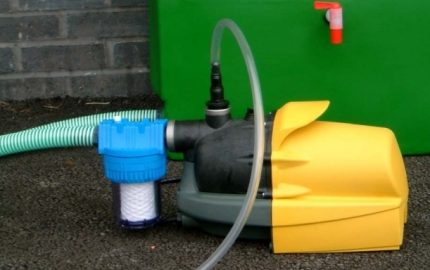
More practical models, the water intake which is located in the upper part of the body. This design solution reduces the likelihood of siltation and penetration into the chamber of the bottom sediment and particles of sand.
Using watering submersible units whose suction valves are located in the bottom of the housing, use special supplies.
By placing the pump on a stand, you can partially protect the working chamber from the ingress of fibrous inclusions, rocky sand suspension and large debris.
The pumps are usually supplied with adapters that allow you to connect flexible hoses and rigid pipes with a diameter of 1ʺ and 1 1/4ʺ. In budget models, most likely, the watering hose and spray nozzle will have to be purchased additionally.
Overview of pumping equipment manufacturers
High demand for pumping equipment for domestic use stimulates manufacturers. Today, foreign and domestic manufacturers offer a wide range of equipment in different price categories.
Imported global brands
Among foreign manufacturers that have proven themselves in the pumping equipment market, it is worth highlighting:
- HAMMER. German leader in the production of first-class pumping equipment. A wide range of products, unique technical solutions and the highest reliability - all this combines the products manufactured under this brand.
- "PATRIOT". One of the oldest American brands. The quality of the products manufactured by this company has been tested by generations. Reliable and convenient chainsaws in work are better known to the domestic buyer under this brand. But pumping equipment is not inferior to them at all.
- "Calpeda." Recognized world champion. The Italian company is famous for its good technical traditions. All equipment is manufactured using high-precision equipment.
- QUATTRO ELEMENTI. Another well-known Italian brand representing high-quality equipment. The company, founded by like-minded engineers, focuses on the reliability and maintainability of products.
Barrel models for watering the garden of these brands can be purchased at a price of 5.5 thousand rubles. More powerful surface and submersible units will cost 6 thousand and more. AND drainage installations average power - within 9 thousand rubles.

Among the companies that are still only building up their potential, but have already earned a positive reputation among a wide range of consumers, it is also worth highlighting “Makita"And"Gardena».
Domestic trademarks
Popular brands of pumping equipment of domestic manufacturer:
- "Vortex". Leading Russian manufacturer. The main advantage of the products is ease of use, quiet operation and minimal hydraulic losses during pumping.
- Gilex. The Russian company produces reliable pumps that can be used both for pumping clean and slightly contaminated water for irrigation.
- "Gardener". Products manufactured under this brand successfully combine an affordable price with decent quality. Compact centrifugal devices easily cope with contaminated water.
The price of centrifugal submersible pumps of these brands starts at around 4 thousand rubles. Medium capacity drainage units cost from 5 thousand and more.
Budget models of domestic production are also very popular. "Trickle" and "Kid". The price of products ranges from 1.5-2 thousand rubles.
But it is worth noting that they are very sensitive to voltage fluctuations in the mains. To work in our conditions, it is better to choose centrifugal models for which no such sin has been noticed.
Conclusions and useful video on the topic
Recommendations for choosing an electric pump for irrigation:
Video review of the Karcher barrel pump application:
Equipment for pumping out a polluted pond:
And finally, I want to note that, regardless of the chosen model, equipment deficiencies are most often manifested due to improper handling.
If the device is designed to pump clean water, then do not lower it into a rain tank. Fallen leaves and sand will quickly clog the filters and disable the device. And it is not the manufacturer who is to blame for this, but only the inefficient owner.
Have experience using pumping equipment for watering garden beds? Please share information with our readers, tell us which pump you use. You can leave comments in the form below.

 Rating of pumps for drip irrigation: TOP-12 of the best offers + recommendations to customers
Rating of pumps for drip irrigation: TOP-12 of the best offers + recommendations to customers  Choosing a pump for a well: how to choose a unit + an overview of the best brands
Choosing a pump for a well: how to choose a unit + an overview of the best brands 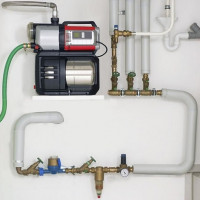 Pumping station for a private house: how to choose and what to look at before buying
Pumping station for a private house: how to choose and what to look at before buying 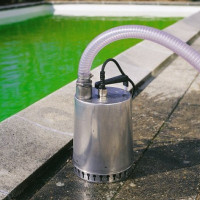 How to choose a pump for pumping dirty water: selection rules and an overview of the best models
How to choose a pump for pumping dirty water: selection rules and an overview of the best models 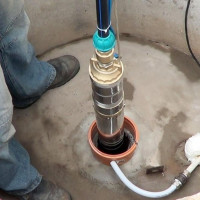 Submersible pumps for the well: 15 best models + tips for customers
Submersible pumps for the well: 15 best models + tips for customers  Well pumps: the best models + tips for choosing equipment
Well pumps: the best models + tips for choosing equipment  How much does it cost to connect gas to a private house: the price of organizing gas supply
How much does it cost to connect gas to a private house: the price of organizing gas supply  The best washing machines with dryer: model rating and customer tips
The best washing machines with dryer: model rating and customer tips  What is the color temperature of light and the nuances of choosing the temperature of the lamps to suit your needs
What is the color temperature of light and the nuances of choosing the temperature of the lamps to suit your needs  Replacement of a geyser in an apartment: replacement paperwork + basic norms and requirements
Replacement of a geyser in an apartment: replacement paperwork + basic norms and requirements
I don’t have an artificial pond. At one time, he put a huge iron tank in the garden (without a top cover). I pump water into it using a centrifugal pump (a tank with a capacity of 1.5 cubic meters is collected in 20 minutes). Water in the heat warms up perfectly. Below I made a hole with a tap, connected a hose. I water without a pump, by gravity along the grooves - the water is so evenly absorbed.
Due to constant interruptions in the water supply in the country, he dug a 5-meter hole in the ground and concreted it. It turned out an excellent capacity for storing water. That's just the expense when watering buckets was disproportionate to the required volume. Yes, and scooping up water in the remainder of 1-2 meters from the bottom of this tank caused discomfort. I bought a surface type pump, extended a hose and put water sprayers on. Now, in general, beauty. Noisy of course, but automated at 100.
Help me please. There is 5 hectares of land and a lake at the bottom corner of the plot. We need a pump that can pump water at a distance of 600 meters to the upper corner of the site and gravity irrigation in rows. The difference in height is about 10 meters, what do you recommend ???